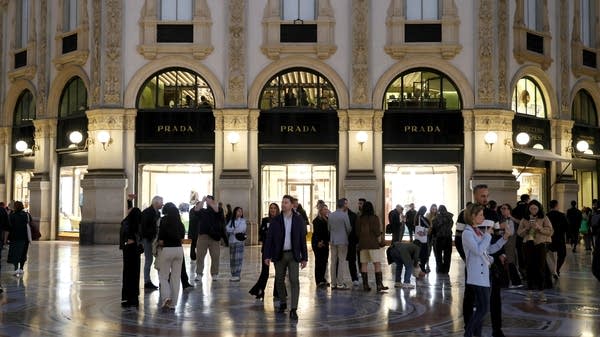Crocs hits record revenue as popularity with younger consumers soars
In recent years Crocs have become a Gen Z fashion staple in spite of both aesthetic and environmental objections.

Crocs recently reported record annual revenue of $4.1 billion for 2024, up 4% from the year prior. The company’s rising numbers are partly due to its resurging popularity among younger consumers.
Crocs, the slip-on plastic clogs with a bunch of holes on top, were marketed as boat shoes when they launched back in 2002 — and were once named one of the “50 Worst Inventions” of all time by Time magazine — but in recent years they’ve become a Gen Z fashion staple.
Anthony Russo is a 17-year-old student at McLean High School in Northern Virginia. He owns five pairs of Crocs, which he likes to wear in what he calls “sport mode” by sliding the heel strap that normally rests on top of the shoes to sit behind his heel.
“I like how you can put them into sport mode, so you can like, run and also just wear them leisurely,” Russo said.
Pricing and comfort are the biggest reasons why Russo’s age group loves Crocs. Classic clogs cost just $50 a pair, making them a cheaper alternative to sneakers that take more effort to put on.
“I think people more nowadays are preferring the more comfortable wear over wearing nicer clothing that might be uncomfortable,” Russo said.
Russo and his friends don’t think Crocs are ugly, in fact, one of his friends owns over 30 pairs. But they might be in the minority. Some researchers even say Crocs are part of a larger trend called “ugly fashion.”
Emily Brayshaw, who studies fashion culture at the University of Technology Sydney, says the idea started as a high fashion trend back in 1996 when Prada released its “Ugly Chic” collection. That concept has since trickled down to casual wear, with young consumers still buying ugly clothes almost 20 years later.
“Ugly dressing is kind of a sartorial backlash against, like this super slick, corporate marketing sort of world,” Brayshaw said. “Day-to-day life is kind of ugly, and comfy, and messy, and fun, and why not lean into that?”
The trend includes a wide range of funky styles, such as clothes that are several sizes too big, exaggeratedly flared jeans and mismatched colors.
Apart from coming in different colors, most Crocs look about the same. They can be customized with another product Crocs sells called Jibbitz, small plastic charms that pop into the clogs’ holes.
Anthony Russo says his Jibbitz mainly consist of things he likes, like pizza and Marvel’s Avengers. The 500-plus different Jibbitz available on Crocs’ website include everything from professional sports logos to Hello Kitty.
“It’s all about, if you like, creating your own ugly, curating your own aesthetic, and really sort of expressing yourself,” Brayshaw said.
Ugly dressing aside, 91% of Gen Z consumers say that they want to buy from sustainable companies, according to PDI Technologies. But Crocs are made of a plastic that is bad for the environment called ethylene vinyl acetate, more commonly known as EVA.
“When we do surveys, 80% of Gen Z tells you that ‘I’m willing to pay 15-20% more for a pair of shoes if they’re sustainable and biodegradable.’ We sold no shoes to Gen Zers,” said Stephen Mayfield, a professor at UC San Diego who is also CEO of the biodegradable shoe brand Blueview.
Gen Z isn’t alone. A 2024 PwC study found that consumers of all ages claim they are willing to spend 9.7% more for sustainably produced goods, but notes that doesn’t always translate into actual spending due to other factors like inflation. Some researchers refer to this difference between moral values and spending habits as the intention-behavior gap or ethical consumption gap.
According to a study by researchers at Konkuk University in South Korea, wearing plastic shoes releases microplastics into the environment over time. This means that Crocs made of EVA also shed microplastics as they wear out. Crocs did not respond to a request for comment.
“Like when you walk around in your sneakers and the bottoms are wearing out, you’ve ground them into microplastic which has now entered the environment,” Mayfield said.
New research shows that these microplastics eventually make their way into human bodies, with a University of New Mexico study finding rising concentrations of plastic in our brains.
Crocs has promised that by 2030 at least 50% of the materials that go into its shoes will be more environmentally friendly. Although that doesn’t necessarily mean the clogs will be biodegradable, it’s a step in the right direction.







